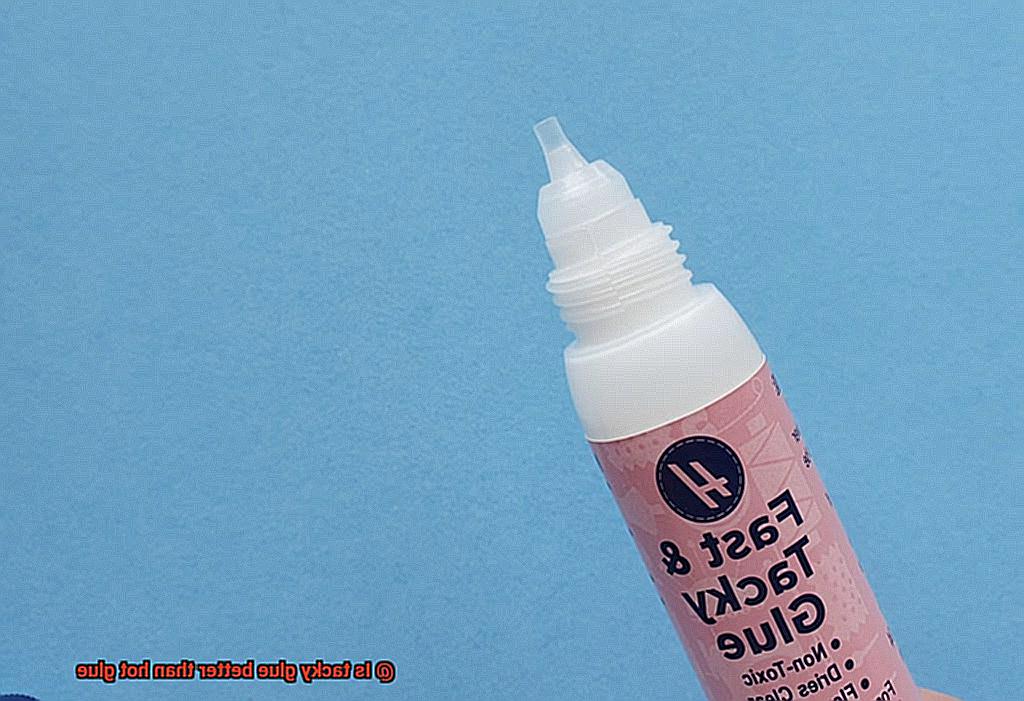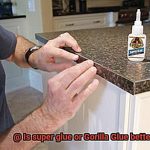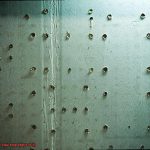When it comes to crafting, repairs, and DIY projects, finding the right adhesive can make all the difference. Amidst the plethora of options available, tacky glue and hot glue often find themselves at the top of the list. Both these adhesives offer numerous benefits in terms of securing materials together, but the question remains: Is tacky glue better than hot glue?
In this blog post, we will delve into the realm of adhesives, comparing and contrasting the advantages of tacky glue over hot glue. We’ll consider factors such as ease of use, cost, strength, and versatility to help you make an informed decision about the glue that suits your specific needs best.
The Advantages of Tacky Glue
Contents
Tacky glue, with its unique properties and versatility, offers a multitude of advantages for crafters and DIY enthusiasts. From its wide range of applications to its non-toxic nature, tacky glue is a reliable adhesive that can bring your creative ideas to life.
One of the main advantages of tacky glue is its versatility. It can be used on various materials, including paper, fabric, wood, and plastics. Whether you’re working on scrapbooking, card making, or general crafts, tacky glue can bond different materials together. This versatility makes it a go-to choice for a wide range of projects.
Another advantage of tacky glue is its longer drying time. Unlike hot glue that sets quickly, tacky glue allows for more time to position and align before it dries completely. This is particularly beneficial for projects that require precision and adjustment. The extended drying time ensures that everything is in the right place before the glue sets, allowing for seamless craftsmanship.
Ease of use is also a notable advantage of tacky glue. It doesn’t require any special equipment like a hot glue gun. Instead, it comes in a convenient squeeze bottle or tube, making it easy to dispense and apply directly onto the desired surface. This simplicity makes it accessible to crafters of all ages and skill levels.
Safety is paramount when it comes to crafting, especially when children are involved. Tacky glue is non-toxic and safe to use. It doesn’t emit fumes or produce heat during application, making it a safer option compared to hot glue, which can cause burns if mishandled. Parents can have peace of mind knowing that their children can enjoy crafting with tacky glue without any harm.
Furthermore, tacky glue forms a strong bond once dry. It creates a flexible and durable adhesion that can withstand regular wear and tear. This makes it suitable for projects that need long-lasting bonding. Whether you’re working on a paper craft, a fabric project, or woodworking, tacky glue holds up well over time.
Tacky glue also offers some level of repositionability. While it may not be as easily removable as hot glue, it still allows for slight adjustments before fully drying. This feature is particularly useful when working on intricate or delicate projects that require precise placement.
In addition to its adhesive properties, tacky glue is resistant to moisture. It can withstand some exposure to water without weakening the bond. This makes it suitable for projects that may come into contact with moisture or require occasional cleaning.
Lastly, tacky glue is cost-effective. It is often more affordable than hot glue and widely available in craft stores and online retailers at a lower price point. This makes it an economical choice for those on a budget or who require larger quantities for their projects.
The Advantages of Hot Glue
Hot glue is a versatile and indispensable adhesive that offers a multitude of advantages for crafters and DIY enthusiasts. Whether you’re working on a simple home decor project or a complex craft creation, hot glue can be a valuable tool in your toolkit. Let’s explore some of the key advantages of using hot glue.
First and foremost, hot glue boasts an incredibly fast drying time. Unlike other glues that can take hours to dry, hot glue sets within seconds or minutes. This means that you can complete projects in a fraction of the time, making it especially advantageous for time-sensitive projects or when you have limited crafting time. With hot glue, you don’t need to wait around for hours on end for your project to dry – it’s ready to go almost instantly.
In addition to its quick drying time, hot glue provides a strong and durable bond on a wide range of materials. It can adhere to surfaces such as wood, fabric, plastic, metal, and even glass. This versatility makes it ideal for various crafting and DIY projects. Whether you’re working with delicate fabrics or sturdy metals, hot glue will create a bond that stands the test of time.
Another advantage of hot glue is that it doesn’t require clamping or additional support to create a strong bond. Simply apply the hot glue and hold the materials together until it sets. This saves both time and effort during the crafting process. Unlike some other types of glue that require cumbersome clamps or supports, hot glue allows for a hassle-free crafting experience.
When it comes to durability, hot glue truly shines. Once it sets, it forms a strong and long-lasting bond that can withstand pressure and movement. This makes it suitable for projects that may be subject to frequent handling or wear and tear. Whether you’re creating jewelry pieces or repairing broken items around the house, hot glue will provide a reliable solution.
Hot glue also offers the advantage of filling gaps and creating dimension. It can be applied in different thicknesses and shapes, allowing you to fill gaps and create three-dimensional designs. This opens up a world of possibilities for adding texture or filling in uneven surfaces, resulting in a more visually appealing final product.
In terms of accessibility and affordability, hot glue guns are widely available at craft stores and come in various sizes and designs. They are relatively inexpensive, making them accessible to crafters of all levels of experience. Whether you’re a beginner or an experienced crafter, hot glue is a cost-effective adhesive choice that will help bring your creative ideas to life.
Furthermore, hot glue is incredibly easy to work with. It melts quickly and applies smoothly, allowing for precise application. It can be easily manipulated while hot and can even be reheated if adjustments need to be made. This ease of use ensures that your crafting experience is seamless and enjoyable.
Hot glue also offers the advantage of being heat-resistant once it has dried. This makes it suitable for projects that may be exposed to high temperatures or sunlight. You can rest assured knowing that your hot glue creations will maintain their integrity even under challenging conditions.
If needed, hot glue can be easily removed. Simply apply heat to soften the glue and then peel it off without leaving behind excessive residue. This makes it convenient for making adjustments or fixing mistakes without ruining your project.
Lastly, hot glue is especially effective at bonding porous materials such as fabrics and wood. It can penetrate the fibers of fabrics or the pores of wood, creating a strong and lasting adhesion. This makes it an excellent choice for a wide range of DIY projects that involve these materials.
Instant Bonding with Hot Glue
Hot glue, with its instant bonding capabilities, is a versatile adhesive that is widely used in crafts, DIY projects, and even professional applications. Its ability to quickly bond materials together makes it a popular choice for tasks that require immediate adhesion. Let’s explore the advantages and disadvantages of using hot glue for instant bonding.

Advantages:
- Quick drying: Hot glue sets within seconds, allowing you to continue working on your project without any delay. This is particularly beneficial when time is of the essence or when you need to adhere multiple pieces together swiftly.
- Strong bond: Hot glue creates a robust bond on various materials such as fabric, wood, plastic, and metal. It can withstand pressure and movement, making it suitable for both decorative and functional purposes.
- Versatility: Hot glue can be used in different temperatures, making it suitable for both indoor and outdoor projects. It is available in different formulations, including low-temperature and high-temperature options, allowing you to choose the one that best suits your needs.
- Ease of use: Hot glue guns are widely available and easy to use. With their simple trigger mechanism that dispenses the glue as needed, they are accessible to both beginners and experienced crafters.
Disadvantages:

- Limited strength: Although hot glue creates a strong bond, it may not be suitable for heavy-duty applications or projects that require extreme durability. In such cases, other adhesives like epoxy or construction adhesive may be more appropriate.
- Messy application: Working with hot glue can be messy as it tends to string or drip while being applied. Careful application is necessary to avoid any unwanted residue or mess.
- Difficult removal: Once hot glue has dried and hardened, it can be challenging to remove from surfaces. This may pose an issue if you need to make adjustments or repairs to your project.
- Limited temperature resistance: Hot glue is not suitable for applications that will be exposed to high temperatures, as it can soften or melt. If you require an adhesive that can withstand extreme heat, specialized heat-resistant adhesives should be considered.
Durability of Tacky Glue vs Hot Glue
When it comes to durability, Tacky Glue and Hot Glue have distinct differences. Tacky Glue is known for its strong bond and durability, making it an excellent choice for various applications. One key difference lies in their ability to withstand movement or stress. Tacky Glue remains flexible once dry, allowing it to endure some degree of movement without losing its bond. This makes it ideal for bonding fabrics or repairing household items that may experience stress or movement.
On the other hand, Hot Glue forms a rigid bond when it cools down. Although it initially provides a strong bond, it can become brittle over time and may fail under stress or movement. Thus, Hot Glue is less suitable for applications requiring flexibility and long-term durability.
The type of materials being bonded also affects their durability. Tacky Glue creates a stronger and more durable bond for porous materials such as paper, fabric, and wood. Its ability to penetrate the fibers of these materials ensures a secure bond that withstands the test of time. In contrast, Hot Glue may not be as durable for certain applications, especially when bonding non-porous materials like plastic or metal. Its inability to penetrate or adhere well to these surfaces results in a weaker bond prone to failure under stress or movement.
Moreover, Hot Glue is sensitive to temperature variations. Exposure to high temperatures can cause it to soften or melt, weakening or breaking the bond. Therefore, it is not suitable for applications requiring heat resistance.
Versatility of Tacky Glue vs Hot Glue
Tacky glue and hot glue are two popular adhesives that cater to different crafting and repair needs. Tacky glue, also known as craft glue or white glue, is a versatile adhesive that can bond a wide range of materials such as paper, fabric, wood, and certain plastics. Its longer drying time allows for adjustments and precise positioning, making it ideal for projects that require accuracy.
Moreover, tacky glue forms a strong and flexible bond that can withstand moderate stress and strain. It can tolerate bending and twisting without breaking or coming apart. This makes it suitable for projects that need durability and resilience. Additionally, tacky glue is water-soluble, making it easy to clean up with water if any spills or excess glue occur during the crafting process. Its user-friendly nature makes it convenient for individuals who may not have much experience with adhesives.

On the other hand, hot glue, also known as thermoplastic adhesive, offers instant bonding capabilities. As soon as hot glue is applied, it rapidly cools down and solidifies within seconds, creating a firm bond between materials. This feature makes it perfect for quick repairs or projects that require immediate adhesion.
Hot glue also boasts high heat resistance, making it suitable for applications where glued items may be exposed to high temperatures or heat sources. However, unlike tacky glue, hot glue is not water-soluble and cannot be easily removed once it has dried. This characteristic can be advantageous or disadvantageous depending on the project requirements.
Clean Up and Residual Effects of Tacky Glue vs Hot Glue
When it comes to clean up, tacky glue reigns supreme with its magical eraser-like qualities. While still wet, it can effortlessly be wiped away with a damp cloth or sponge, making it the perfect choice for projects that demand precision and neatness, such as delicate fabric work or paper crafting. In stark contrast, hot glue has earned a reputation for its messy and stubborn residue. Once dried, it hardens into an unyielding state, stubbornly clinging to surfaces. Not only does it leave behind unsightly glue strings, but it can also cause damage if not removed properly.
The secret lies in their composition. Tacky glue is water-based, which makes it a breeze to clean up. It can be dissolved with water, simplifying the removal process from various surfaces. Hot glue, on the other hand, is crafted from thermoplastic adhesive that solidifies when cooled down. This characteristic makes cleaning up a much more challenging endeavor. It demands extra effort and at times necessitates the use of solvents or scraping tools to eradicate the sticky residue.
When it comes to residual effects, tacky glue is a master of clean getaways. It dries clear and leaves no noticeable residue on most surfaces. However, porous materials like fabric or wood may absorb the glue, leaving behind faint marks or discoloration. These can usually be avoided by applying a thin layer of glue and allowing it to dry completely before attaching objects together.
Unfortunately, hot glue leaves a more visible trace in its wake. The dried residue often possesses a slightly yellowish or amber hue, which can be unsightly on light-colored materials. Moreover, the hardened texture of hot glue residue poses challenges for complete removal, especially from delicate surfaces or fabrics.
It is worth noting that different brands or formulations of both glues can have varied clean up methods. Some tacky glues may exhibit stronger adhesion properties and require additional effort for removal, while certain hot glues may have lower melting points, rendering them easier to clean up.
When contemplating the long-term residual effects, tacky glue emerges as the more stable choice. It remains flexible over time, resisting brittleness and yellowing. Conversely, hot glue can succumb to brittleness and yellowing, particularly when exposed to sunlight or extreme temperatures.
Considerations When Choosing Between Tacky and Hot Glues
Considerations When Choosing Between Tacky and Hot Glues:
- Adhesion Strength: Tacky glue provides a strong bond for lightweight materials, while hot glue offers a stronger bond for heavier applications.
- Drying Time: Tacky glue takes longer to dry compared to hot glue, which sets quickly within seconds to minutes.
- Temperature Resistance: Tacky glue loses its adhesive strength when exposed to high temperatures or prolonged moisture, while hot glue can withstand high temperatures without losing its adhesive properties.
- Flexibility: Tacky glue provides a more flexible bond, making it suitable for projects that require movement or bending. Hot glue creates a rigid bond that may not allow for much flexibility.
- Application Method: Tacky glue is typically applied with a brush or nozzle, allowing for precise and controlled application. Hot glue requires a hot glue gun, which can be messier but allows for easy and precise application.
IdKK6z7VE-c” >
Conclusion
In conclusion, the decision between tacky glue and hot glue rests on your individual needs and preferences. Tacky glue offers unrivaled versatility, effortless application, utmost safety, and exceptional cost-effectiveness. It effortlessly adheres to a wide array of materials, granting you ample time for precise positioning with its slower drying time. Plus, it boasts a non-toxic formula that ensures your crafting experience remains hazard-free. And let’s not forget its budget-friendly price tag – a definite win.
On the flip side, hot glue presents an instantaneous bonding solution with rapid drying capabilities that will leave you in awe. Its mighty grip extends to various materials, making it an ideal choice for those urgent projects demanding immediate adhesion. Furthermore, hot glue’s heat resistance adds another feather to its cap as it effortlessly fills gaps and adds dimension to your creations.
Both glues exhibit their own set of pros and cons in terms of durability, versatility, clean-up convenience, and lingering effects. Tacky glue stands the test of time by maintaining flexibility while being easily washed away with water. Conversely, hot glue forms a sturdy bond but leaves behind stubborn residue that may pose a challenge during removal.
When faced with the task of selecting between tacky glue and hot glue, consider vital factors such as adhesive strength, drying time, temperature resilience, flexibility, application method – all while keeping your project requirements front and center.






